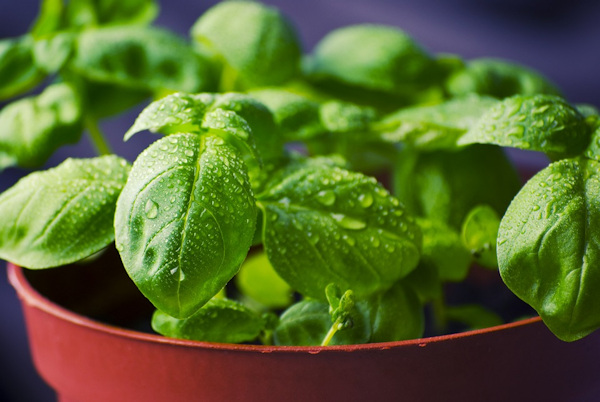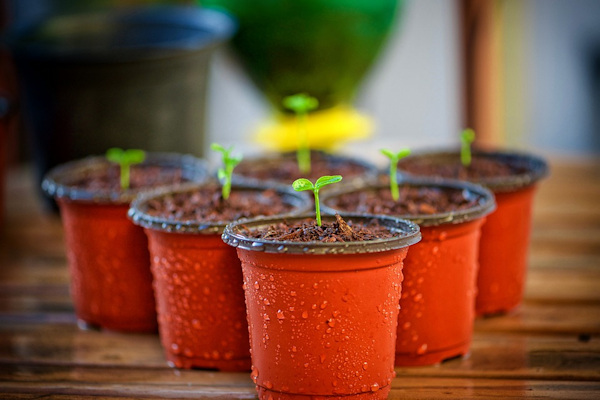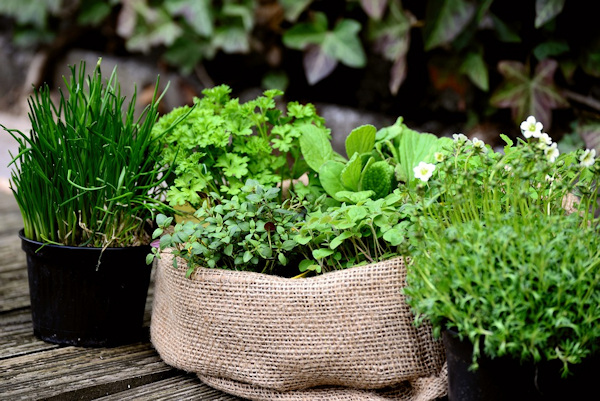Into The Garden - March
Gardening is a fantastic way to relax and unwind, and does not have to include large or strenuous tasks. For example, simple activities, such as growing your own produce in small containers, can be a wonderful way to encourage children to spend more time outdoors. Growing plants and herbs in windowsill pots or patio containers is also a perfect starter project for those wanting to improve on their gardening skills.

Easy growing herbs
Growing herbs in the garden or the kitchen is an easy way to get into gardening, and can be great for adults or children. These fresh ingredients are fantastic at growing in windowsill pots or garden beds, and will thrive in full sun or partial shade. Herbs are commonly used in a variety of dishes, and can be a useful addition to the home of any avid cook.
Herbs are considered easy to grow as they will continue to develop once they have been cut. When the plant is ready to use, simply cut the top of the stems or pinch the leaves off, to use as an ingredient in cooking. As the rest of the stem remains planted in the soil, new shoots will begin to form and produce a fresh set of herbs ready to be harvested again.
Easy growing herbs
Indoors – Basil, Coriander, Parsley or Dill
Indoors & outdoors - Rosemary, Thyme, Chives, Oregano or Mint
Shop a range of herbs at Longacres, here.

How to grow your own herbs
Knowing how to grow your own herbs is a sure-fire way to ensure you never run out of your favourite ingredients. By following a few simple steps, you can have a herb garden ready for your next meal!
Growing from seed
- Take a small pot with drainage holes, roughly 10 cm wide, and fill with seed sowing compost until ¾ full
- Sow your seeds on the top of soil according to package directions
- Place the pot on a saucer to catch excess water that drains away
- Water well and allow excess water to drain away
- Continue watering every other day to ensure the soil does not dry out
Growing a mature plant
Herbs can be purchased fully grown, and potted on for ease and convenience. Herbs that are fully grown can be kept in their nursery pots and used immediately, or they can be potted into a larger pot to grow further.
- Take your chosen pot, ensuring it has drainage holes in the base and is ½ inch to an inch larger than the current pot, and fill half full with potting compost
- Carefully remove the plant from the pot and break up the soil around the roots
- Place the plant into the new pot and press firmly into the soil at the bottom
- Add extra soil around the outside of the roots until the pot is full
- Press down gently on the top of the soil to ensure it is compacted into the pot
- Add more soil if required, so the pot is full and all roots are fully covered
- Place the pot on a saucer to catch the excess water that drains away
- Water the plant well and allow excess water to drain
Shop propagation equipment at Longacres, here.
Shop compost at Longacres, here.

Ways to grow your own without a garden
Not having access to your own garden shouldn’t stop you from being able to grow your own. Whether you are wanting to plant flowers, shrubs, produce or even trees, there are options available for those who only have balconies, windowsills or patios!
Small pots – perfect for windowsills. Can be used to grow flowers or herbs
Containers – ideal for balconies or patios. Can be used to grow flowers, small shrubs, herbs or produce such as potatoes, carrots or tomatoes
Large pots – great for patios. Can be used to grow flowers, large shrubs, herbs or produce such as potatoes, tomatoes, peppers or beans
Grow bags – best used on patios. Can be used to grow tomatoes, peppers, cucumbers or chillies
Shop pots and containers at Longacres, here.








